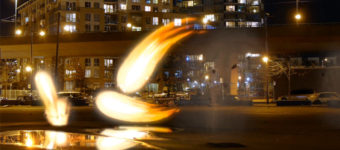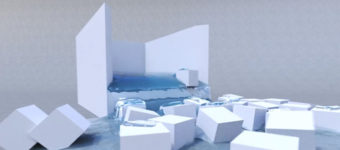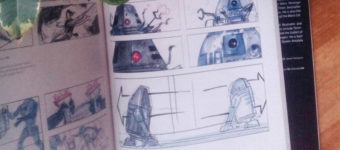
Matte Painting In Film, VFX & Animation: What It Is & How It Works
Matte painting, in both traditional form and its current digital form, is a film technique that combines art and live action to create the illusion of a setting that would otherwise be too expensive, inconvenient, or impossible to film live.
The basic principle of matte painting is that part of the scene is “masked off”, either with black material, green screens, or digital cropping.
While it originated as a photography technique, matte painting has been used by the film industry since the late 19th century and some of the most famous films in history used them to create fantastical worlds.
Think of films like The Wizard of Oz (come on, you knew that Emerald City scene was painted, right?), The Birds, the original Star Wars films, Mary Poppins, Titanic, and the Indiana Jones movies.
Those films all used actual paintings on sheets of glass to create the illusion of an ewok village, a massive artifacts warehouse, a cliff face, or a night sky.
Nowadays nearly all modern films use digital matte paintings.
How Does Matte Painting Work?
Though most matte paintings these days are created in computer programs with the live action composited digitally, old school matte paintings use careful double exposure of the film to create the illusion of the live action happening in the painted scene.
The original technique involved painting a photorealistic scene on a sheet of glass with either paint or pastels, leaving parts of the glass clear where live action would be inserted later.
Once a matte painting was created with clear glass “holes” where the live action would go, the first step was to put a black covering behind the holes. This would prevent light from getting into the camera in those places so the film would essentially be blank in those spots.
The painting was then filmed with a stationary camera for the length of the shot.

After the initial shot the film was rewound. The black coverings were then removed from the clear glass holes and a projector behind the painting would project the live action onto those spaces on the painting. Pretty cool right?
So when the painting was filmed again, the live action would fill the blank spaces on the now double-exposed film.
The Birth of Matte Painting
Matte painting has been around as a technique since the late 1800s when photographers were playing with partially exposed film.
But it was made popular as a film technique by a filmmaker named Norman Dawn who would put black tape on a sheet of glass positioned between the camera and the scene he was shooting.
He’d then rewind the film and shoot a matte painting with new elements he wanted to include in a scene, like trees or additions to buildings.
He used this technique to disguise eyesores in a location and otherwise alter the setting of his films.
The use of matte painting was a standard film technique throughout the 20th century appearing in more and more major films before digital VFX came onto the scene and became the new standard.
One of the very last hand painted matte paintings was used in James Cameron’s 1997 film Titanic.
Matte Painting Today
The principal of matte painting, inserting live action shots into a painted fictional world, is still used in nearly every film made today.
But now matte painting is primarily digital and almost unrecognizable from its origins as paintings on glass.
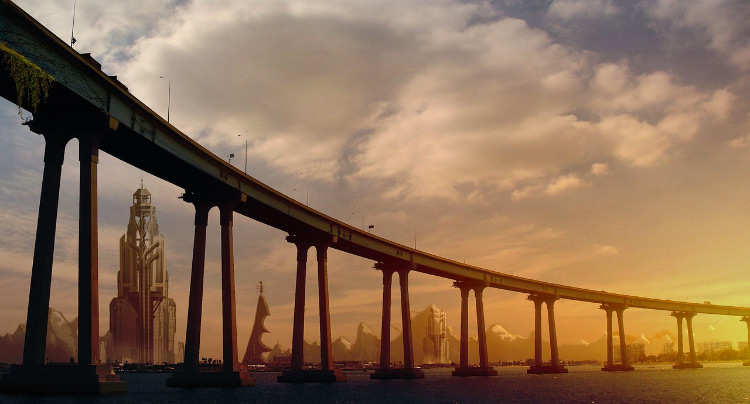
The first ever digital matte painting was created by painter Chris Evans for the 1985 film Young Sherlock Holmes, when he scanned a photographic image and layered it with a digital drawing to create a scene.
Fun Fact: Chris Evans also did a lot of the matte paintings for the Star Wars films, including the spaceship hangar in the famous imperial march sequence.
Though digital renderings are the new bread and butter of VFX, actual painting still has a place in the film world.
Sometimes pastel drawings or actual paintings are used as concept references or even photographed and scanned into a computer as a base for the visual setting to be digitally altered and layered with other images to create the final setting.
Modern matte artists use a variety of digital painting techniques to create digital matte paintings, including scanning photographs or images of handmade artwork, collaging images, or even pure digital painting techniques.
Modern matte artists might create entire landscapes or small set pieces such as statues or buildings to be digitally composited into footage.
Digital matte painting is used to change the landscape, to turn a single background extra into thousands of people, to change a sunny sky to an ominous one, and to manipulate film footage in many other ways.
Sometimes matte paintings are even turned into actual canvas backdrops!
This technique was used in Harry Potter and the Prisoner of Azkaban when paintings were printed onto six 100″ canvases and stitched together.
Working As A Matte Painter
Matte painters usually work under the direction of a film’s art director.
The artists are given a description and desired mood of the scene, then they create a concept piece to work from either by hand or in a program like Photoshop or illustrator.
The concept must then be approved by the art director, creative director, and/or film director.
Afterwards the matte artist creates the actual digital painting, either starting from scratch or using the concept art as the “background plate” which is layered with more images and painted elements to create a 3D environment.
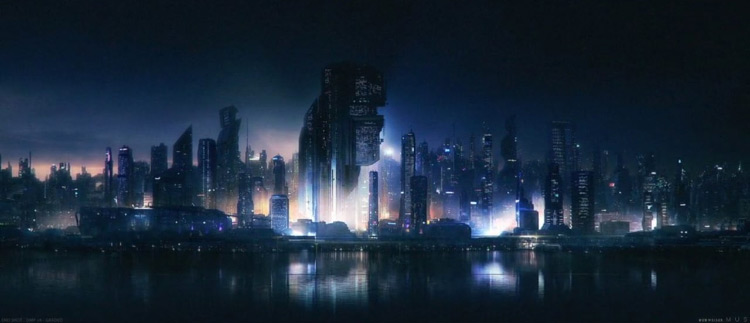
If you want to become a matte painter then you should train as a studio artist first. You’re going to need solid art skills to create photorealistic backgrounds for film. Many matte artists who attend college have a bachelor’s degree in fine art or sometimes game design.
You’ll also want to learn common digital art programs like Photoshop and Illustrator in addition to any relevant 3D modeling programs too.
Learn any digital artistic program you can get your hands on. If you’re asked to use an unfamiliar program for a job you should be comfortable learning.
Or when new programs inevitably come onto the scene they’ll be easier to learn if you already know how similar programs work.
Try getting a job in the art department of a film studio as an animator, concept artist, or even an assistant. That will help you build up your resume and get to know people in the industry.
And of course, make sure to build up your portfolio with traditional artwork, digital art, or anything else relevant. Bonus points if you can do work for smaller film and photography projects.
Your portfolio shows what you can do artistically while your resume shows that you can learn and how much work you’ve done.
Matte painting has gone through major changes in the last century but as a film technique it’s here to stay. And there’s plenty of demand for great matte painters with a strong vision and sense of imagination.


